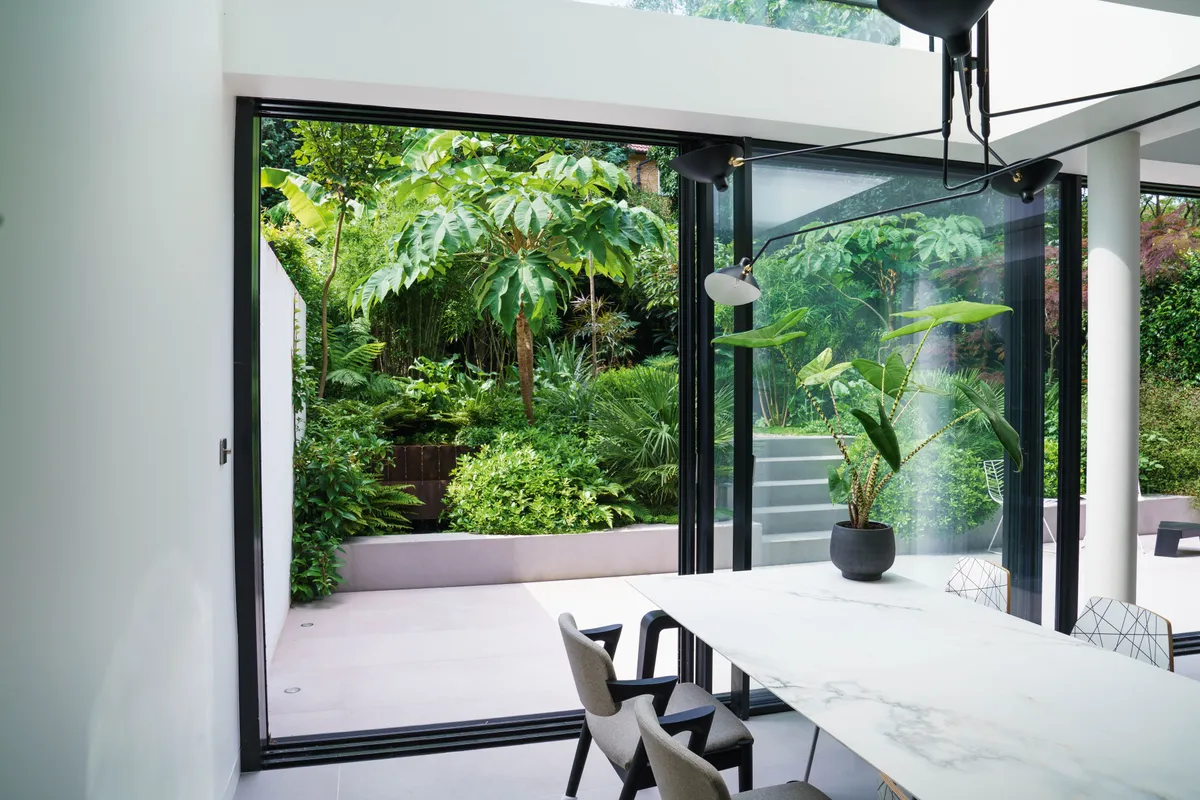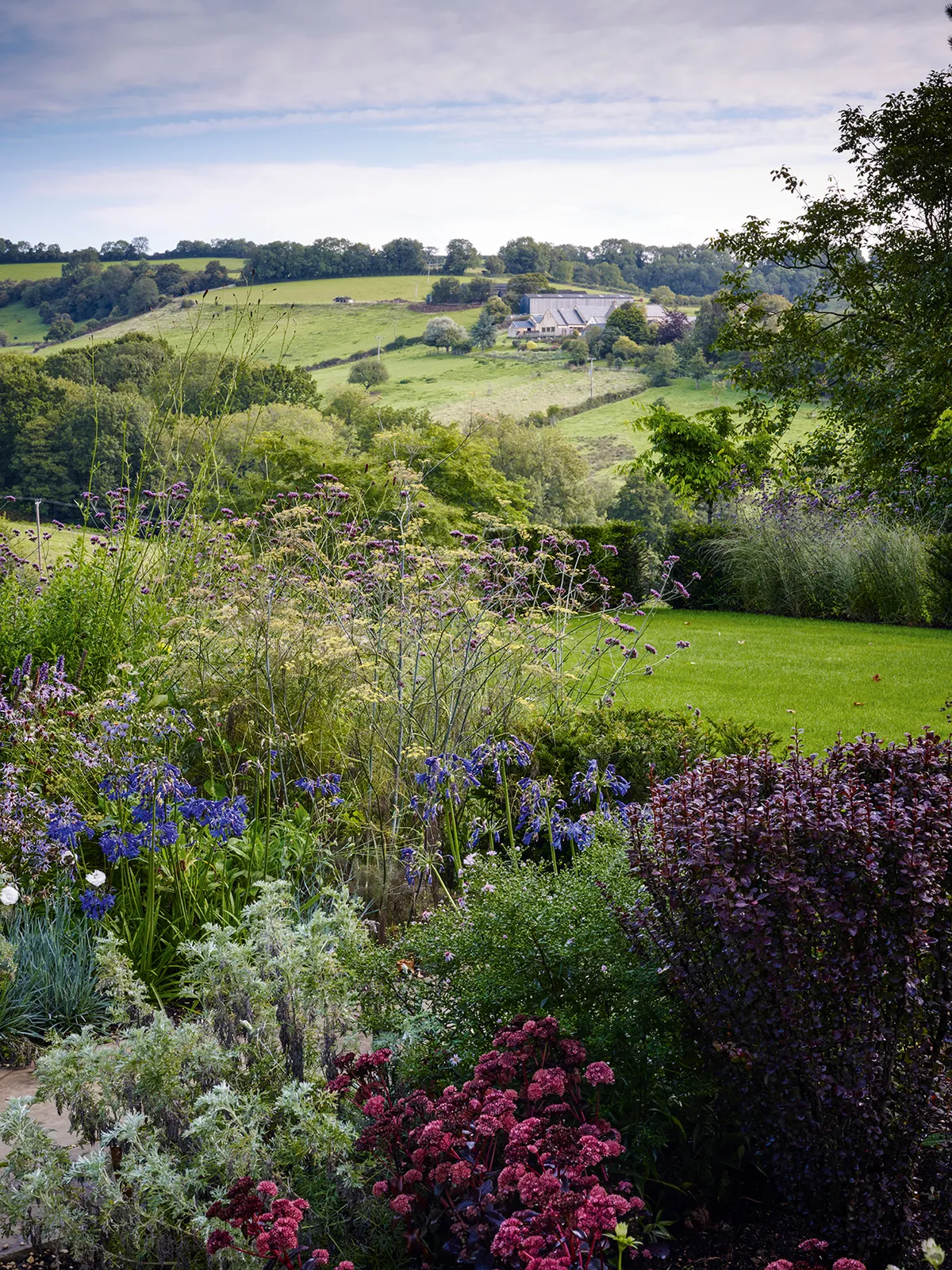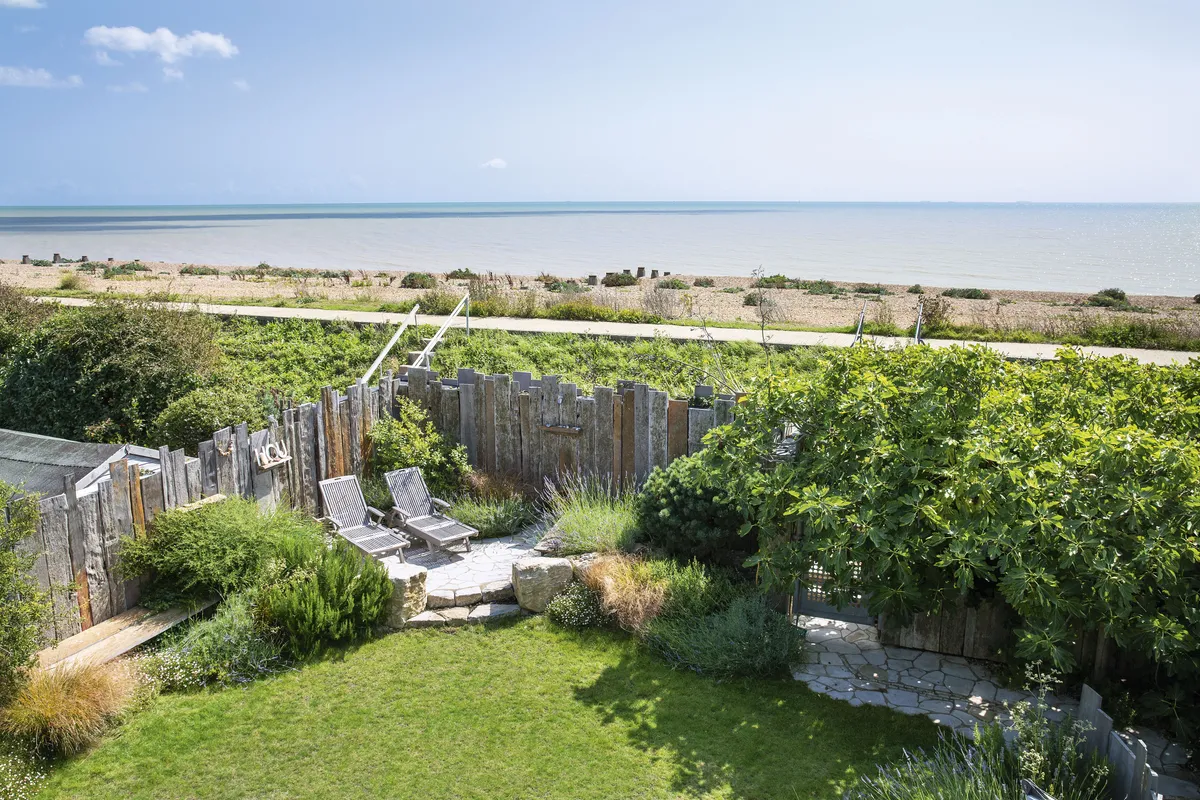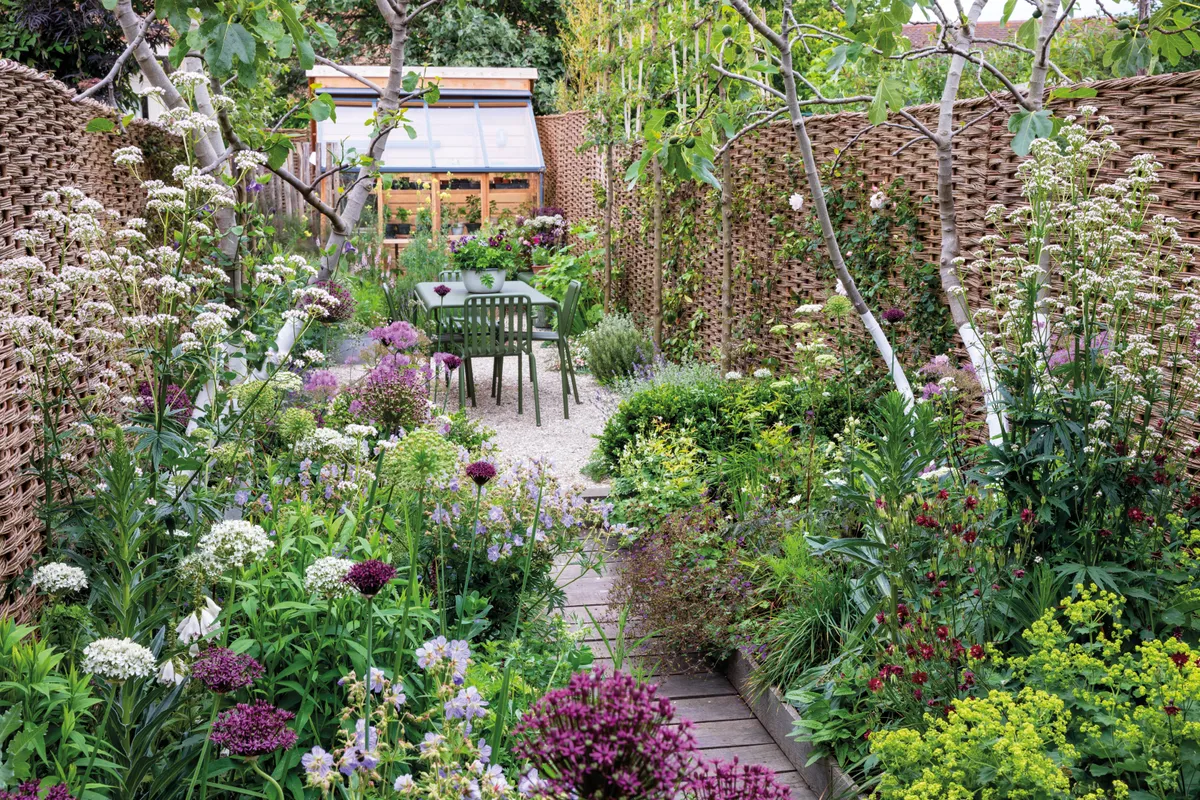Garden designers will often talk about creating ‘unity and harmony’ in a garden, but how can you achieve it? A good starting point is with your house. Consider whether it is a period property – does it have a distinctive architectural style and what are its key materials? You could create a garden that is faithful to a particular period, or form a connection by simply selecting materials or design details from the house and using them in the garden construction.
Did you know that you can take a sample brick from your house to a ‘brick library’ (yes, there is such a thing) and find a match? This is particularly useful when building walls, steps or raised beds.
How to design your garden
Work with the architecture of your house

Doors and windows are the physical connections between house and garden; their location will have a direct influence on where best to position paths, terraces and focal points. Decide which windows offer the most interesting views into the garden. This could be standing at the kitchen sink or sitting in the conservatory. Taking photographs from inside will help you decide where to place key focal points, such as a stunning tree, a piece of sculpture or a striking planting scheme.
If the house interior has a strong theme or style, why not reflect this in the design of the garden? Think about matching paint colours, surface materials or design features. It is also possible to create a seamless transition between inside and out by building the patio at the same level as the threshold. However, be extremely careful not to breach the damp-proof course and ensure that you install adequate drainage along the baseline of the house to take away any surface water.
If you are using the same paving material inside and out, remember that the exterior paving will weather and eventually there may be a considerable difference in colour.
Borrowed landscapes

If you look beyond the garden wall and consider how the site relates to the surrounding landscape, it can help with the design process. Designers talk of ‘borrowing the landscape’, which simply means opening up vistas from beyond a garden, allowing you to appreciate distant views.
A niche cut into a hedge or a pair of trees planted apart are simple ways of framing a view and drawing the eye outward. The ha-ha, which is basically a hidden ditch, is probably the most familiar device for seamlessly connecting the garden to the landscape.
Identifying trees and shrubs that are growing in neighbouring gardens or on surrounding land should give you an indication of the plants that will thrive in your garden. And if you select similar species and position them close to the garden perimeter, this will also help to ‘blur’ the boundaries, creating a connection to the outside and making the garden appear larger.
Location, location, location

The geographical location of your garden will often aid plant selection. For example, in a coastal situation sea buckthorn (Hippophae rhamnoides) or hawthorn (Crataegus monogyna) will both survive the exposed conditions and also connect your planting to the landscape.
Observe the local topography and see if this can be reflected in some way. The lines of distant hills could be mirrored by a cloud-pruned hedge, or plant swathes of grasses that will gently undulate in the breeze to resemble the contours of the land.
Choose local materials

Those who live in an urban environment may be muttering about the lack of sweeping vistas – however, it is still possible to create a connection. Local materials and building styles may be reflected in the design of the hard landscaping.
Formal hedging and geometric topiary can be clipped in an innovative way to echo the outlines of the cityscape. Take a look at images of the High Line linear park in Manhattan, a fabulous example of framing city views and relating the park to the industrial heritage of a site.
Working with a grid
To ensure that the proportions of a garden are in keeping with those of the house, the late, great garden designer John Brookes suggested using a grid system. To do this, simply take the dimensions of a prominent feature of the house, such as an extension, French doors or even the spacing between windows and doors. Use this measurement to draw a grid on to tracing paper so you can formulate a garden design in scale with the house. This method can be particularly useful for designing areas immediately surrounding the house, but you should not feel too constrained by it.